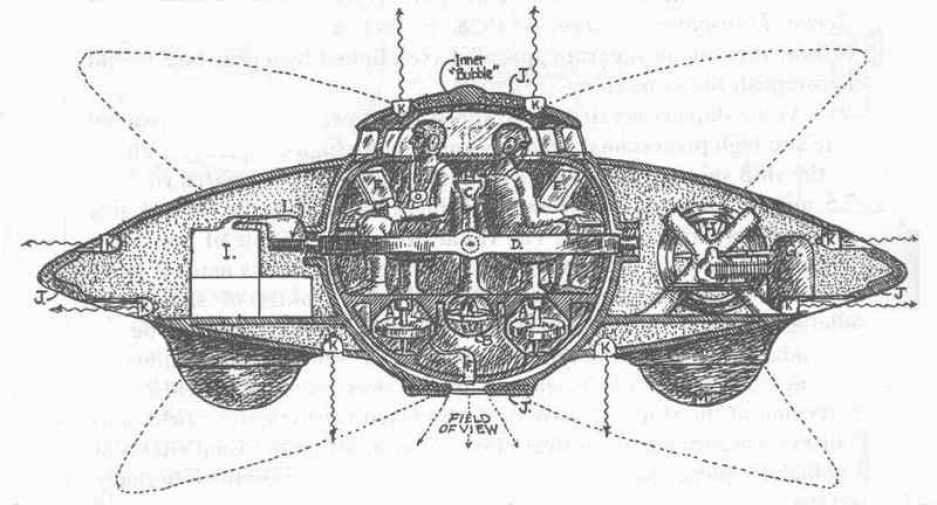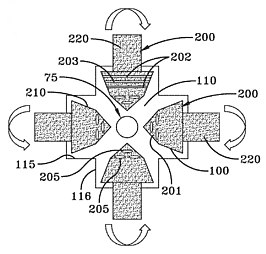One fairly consistent observation among American UFO people in the frothing wake of media attention to the recently released Preliminary Assessment on UAP is how the topic is now not only taken relatively seriously but how this interest is shared across the Great Divide in American politics and culture (Republican vs. Democrat, Conservative vs. Liberal), both among politicians (e.g., Marco Rubio (R) and Harry Reid (D)) and television networks (Fox and CNN). Now, Marik von Rennenkampff, an opinion columnist for The Hill, proposes an even stronger possible role for the topic in his piece How transparency on UFOs can unite a deeply divided nation.
Von Rennenkampff argues that “the UFO mystery could ultimately transcend the deep polarization of the post-Trump era,” regardless of what Unidentified Aerial Phenomena (UAP) ultimately turn out to be. On one reading, the Preliminary Assessment leaves it open that, as President Trump’s final director of national intelligence John Ratcliffe claims, “there are technologies that we don’t have and frankly that we are not capable of defending against” or, that as Chris Mellon, et al. maintain, these technologies may be extraterrestrial. “If Ratcliffe is correct and analysts ruled out mundane explanations or advanced U.S. and adversarial technology, the government’s high-level assessments would fuel a remarkable discussion, drawing in Americans from across the political divide,” thinks von Rennenkampff. Alternatively, “if a thorough investigation, driven by intense bipartisan interest, ultimately determines that balloons, drones, birds or plastic bags explain the most extraordinary UFO encounters, the upshot is that America will [still] be less politically and culturally fractured,” precisely because of “the intense bipartisan interest” this latest iteration of “the UFO mystery” will have inspired.
Von Rennenkampff seems caught up by an enthusiasm for the phenomenon that has clouded his reasoning. On the one hand, one has to wonder how serious the public interest in “the UFO mystery” is. Surely, some believe UAP are “real” as fervently as they do the earth revolves around the sun or the earth is flat, but many, imaginably, even among the roughly half the American public who will say “that UFOs reported by people in the military are likely evidence of intelligent life outside Earth” do so because there is nothing at stake in entertaining the idea. On the other, Rennenkampff is correct to posit that should a large majority of the American populace get taken by the question of the nature of UAP America will be less culturally fractured…on precisely this one point, but it hardly follows that the country will be less politically divided on questions of, e.g., reproductive or labour rights, race relations, gun control, the division of church and state, the environment, taxation, or foreign policy.
At the end of his column, von Rennenkampff writes something that can be read as his dimly realizing the vacuousness of his own thesis: “As large swathes of the country face a drought of ‘biblical proportions’ and all-time temperature records are demolished, an unlikely shot at uncovering ‘breakthrough technology’ is worth eroding the deep fault lines dividing America.” Von Rennenkampff’s very rhetoric undermines his proposal. A drought of “biblical proportions” would, in a country with as many fundamentalist Christians as the U.S., make a profound, urgent impression on just that populace keyed to perceive it, a demographic more likely to respond to such a sign from heaven than lights in the sky. Furthermore, to “erode” a fault line would be to deepen it, unless the author has in mind some biblical deluge that would wash away the earth on either side. His very language testifies against the spuriousness of what he intends.
Moreover, the contrast between the gravity of undeniable, sustained drought and killer heat and the flight of fancy of that “unlikely shot” is stunning. Von Rennenkampff’s wager seems to be that UAP are “real”, that they represent either an earthly or unearthly “breakthrough technology” (at least aeronautically), a technology that can be harnessed to practically address the climate emergency, and that the public might be tricked into uniting to tackle this undeniable existential threat by the fascinating lure of a seemingly mysterious technology (ours or theirs or theirs) when it fails to acknowledge what in fact is right in front of its eyes wreaking death and havoc. And if he and we lose this wager, and “a thorough investigation, driven by intense bipartisan interest, ultimately determines that balloons, drones, birds or plastic bags explain the most extraordinary UFO encounters,” what then?
The bitter irony is that Americans are unable to come together in the face of a relatively concrete public health emergency, to agree on and follow the public health measures, e.g., masking and vaccination, to bring the present pandemic under control, much less to come to terms with the reality posed by drought, dangerously high temperatures, and increasingly powerful and destructive tropical storms and hurricanes. If Americans can’t unite in the face of such immediate, dire threats, the political potential of UAP is a will o’ the wisp.
In a not unrelated vein, some readers of last week’s Sightings may have been mystified or miffed by my linking and referring to a leaked draft of the latest IPCC report in the context of and in contrast to the big ufological news of that week, the release of the ODNI Preliminary Assessment on UAP. The comments on a recent opinion piece in The Guardian, “Canada is a warning: more and more of the world will soon be too hot for humans”, however, included some very telling and pertinent remarks that are more assured of the assessment’s implications: “We now know that humans or non-humans have objects that can move around at very high speeds without giving off a significant heat signature”, and
The US govt just confirmed the existence of UFOs. They are either human or non-human (i.e., not swamp gas, ‘system errors’ etc). These UFOs move in ways that defy currently known technology…. ‘States and businesses’ could get on with researching this now known direction of technological travel,
and most tellingly, in light of the “recent UFO disclosure…We now know for sure the technology exists [to mitigate green house gas emissions]—time to see what it can do and how it might reduce the environmental footprint of humanity”.
Here is a demographic convinced that humankind has either developed or encountered “a breakthrough technology” adaptable to solving its energy and environmental challenges. But its seeing this technology as a way to solving the climate emergency is as muddle-headed as von Rennenkampff’s wager. If the technology is nonhuman, then the possibilities of our exploiting it for our own ends are vanishingly small (the claims of Michael Salla and Steven Greer notwithstanding); if the technology is human (which the Assessment is far from affirming), it doesn’t follow it is even applicable or scalable to solving global warming. Both fanciful hopes are akin to the more mundane if speculative technofixes proposed by geoengineers: they all fixate on development’s solving the problems that attend development when the painful truth of the matter is that we already possess immediately deployable ways to reduce both green house gas emission and carbon dioxide in the atmosphere (e.g., the hundred plus solutions set out by Project Drawdown) whose primary obstacle to being implemented is political, namely those parties with vested interests in maintaining an ecocidal status quo from which they profit (and who are among the first to promote technofixes that leave social relations favourable to their flourishing untouched): they are, in a word, ideological.
What’s remarkable about these two instances of “the UFO imaginary” is how their intended touching down on real world concerns is in actuality a flight into fantasy. The overwhelming, seeming intractability of urgent, real world problems makes some of us, understandably, avert our gaze heavenward, seeking answers that cost us nothing to these problems that seem to threaten everything.



As someone who frequently hate-watches American news programs from across the political spectrum (i.e. from self-hating all the way to other-hating liberalism), it feels like there is an almost conscious attempt of late, though probably not one “planned” in any sense by some shadowy cabal, to present a unifying message vis-a-vis the Preliminary Assessment on UAP. Shows that would normally not touch anything UFO-related with a ten foot pole are now carefully setting aside time to interview all sorts of dodgy “former Pentagon experts” and replay grainy ultrasound scan-like footage. “Even Obama claims there may be something there!”
Yet even so, the right, as if by instinct, tries to spin this as proof of military unpreparedness and federal weakness, while the left bemusedly takes on a “huh! well we just don’t know”-type approach to this issue that, from their vantage, offers zero political exploitability. It’s a strange, totally unconvincing and self-undermining spectacle, and I’m not sure whether it will make it into the new year.
LikeLike
To speak in the argot of the day: “Like, yeah!”
LikeLike